
6 minute read
A Series of Unfortunate Events
“The Grapes of Wrath” by Nobel-Prize winning author John Steinbeck
Dust storm in Rolla, Kansas. May 6, 1935. The photo was sent to President Franklin D. Roosevelt along with the note, “Dear Mr. Roosevelt, darkness came when it hit us.”
THE NUMBER OF DUST-ON-SNOW EVENTS IN COLORADO HAS BEEN INCREASING SINCE THE EARLY ‘90S. HERE’S WHY THAT’S A BIG DEAL.
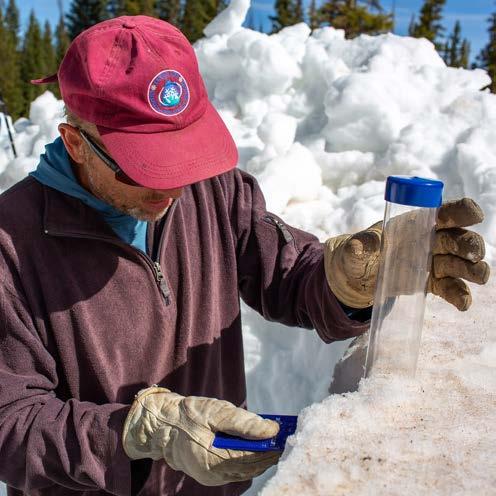
TREY MULLEN
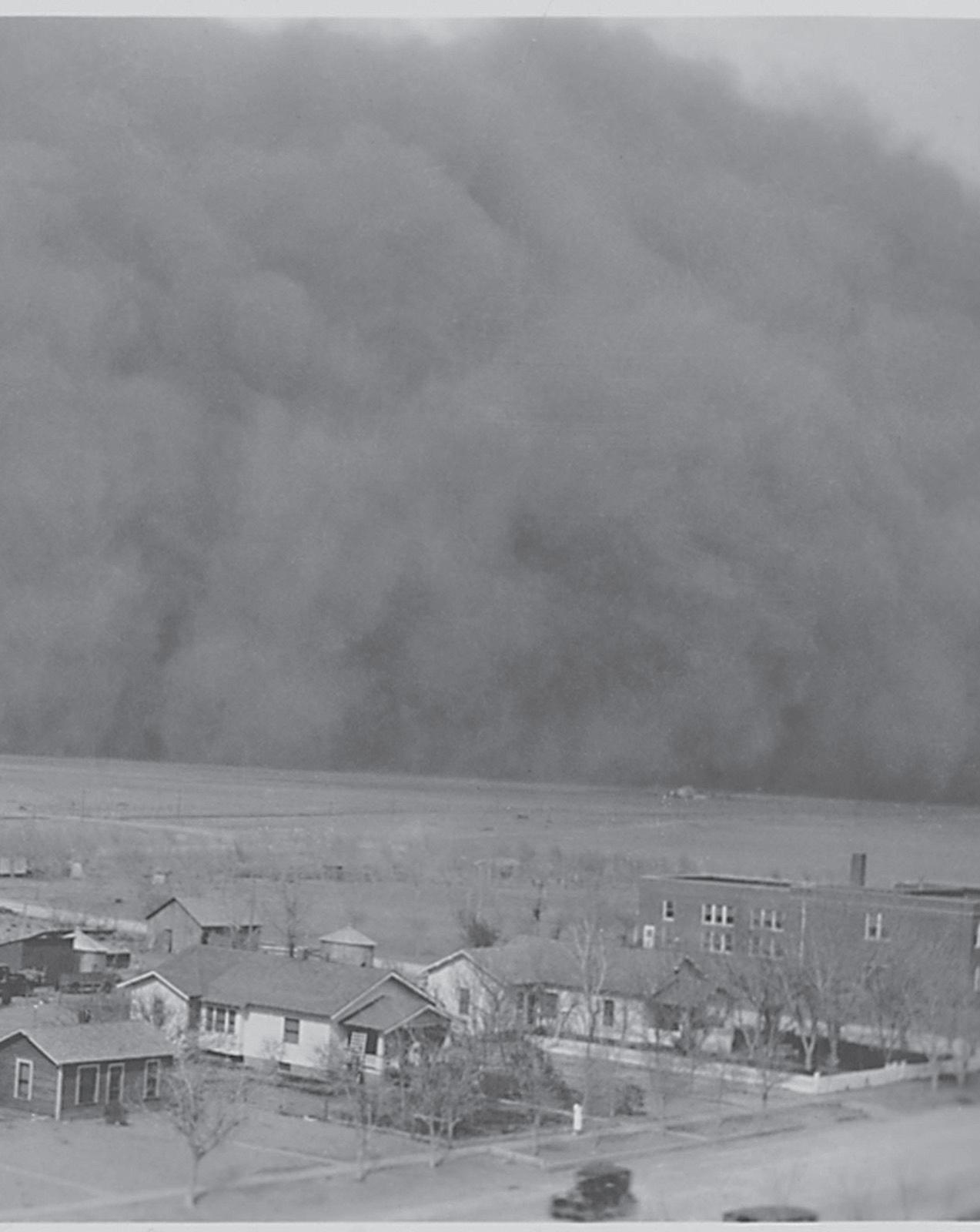
Snow Hydrologist Jeff Derry carefully collects dust-onsnow samples atop Rabbit Ears Pass last May.
| BY TREY MULLEN
On May 8, 2022, Routt County residents woke to find a surreal sight: rustcolored dirt and sand, unlike any found locally, covered the ground and coated homes and vehicles. This was a “massive dust event,” that originated as far away as Four Corners, according to Colorado dust-on-snow hydrologist Jeff Derry. Members of the Colorado Mountain College biology department, Yampa Valley
Sustainability Council, and Ski Town Media staff gathered on Rabbit Ears Pass with Derry to record dust-on-snow samples one week after the massive May 8 dusting event. Derry has observed the severity of dust-on-snow events increase over the years, having monitored and sampled dust-onsnow at the Rabbit Ears site yearly since 2005. After digging a hole into the snowpack down to ground level, Derry meticulously collected the top layer of dust to be sent to the U.S. Geological Survey to determine its mineral content and source of origin.
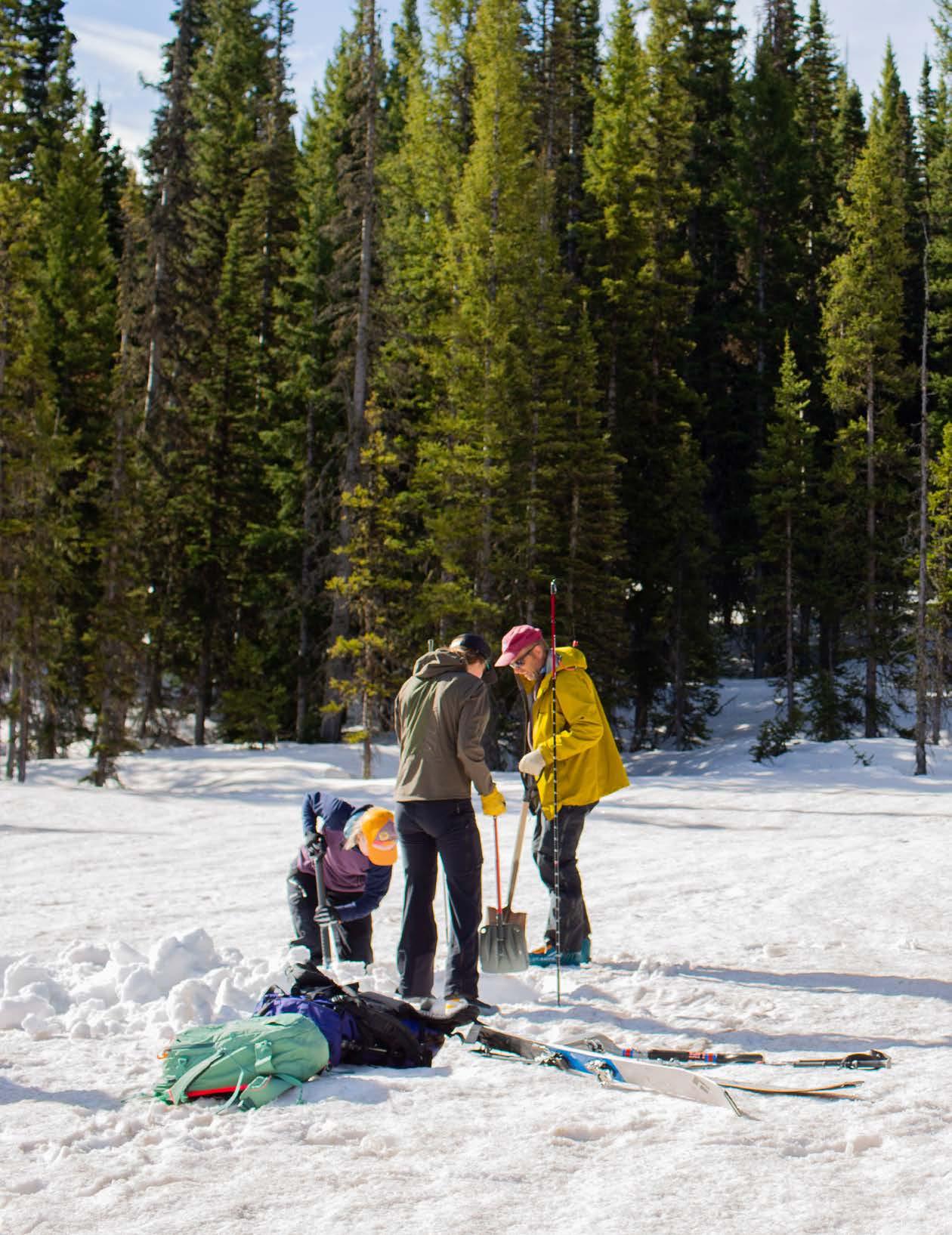
Colorado Mountain College Biology Professor Becky Edmiston, Snow Hydrologist Jeff Derry, and Yampa Valley Sustainability Council Water and Snow Program Manager Madison Muxworthy, dig a snow pit on Rabbit Ears Pass in an effort to collect dust-on-snow samples.
“Snow, the beautiful white snow” still continues to fall. Most of the hay for the cow is gone. Mail has not got in from either direction. We have taken turns reading. All the family have retired but me and I still have to fix Dave’s supper in case he comes in late.

“Dairy of Lulie Margie Crawford: A Little Girl’s View of Life In the Old West 1880-1881” edited by Lulita Crawford Pritchett
TREY MULLEN
Why was Derry collecting this data? It comes down to water: the lifeblood of Steamboat Springs. Whether it’s snowfall on surrounding mountain ranges or spring runoff coursing through the rivers of the Yampa Valley, water is essential to nearly every aspect of Steamboat’s way of life. The overall snowpack in the high country during the winter, and the rate at which that snowpack melts throughout the spring and summer, have massive implications for the surrounding community. The operating windows for businesses, the quality and accessibility of outdoor recreation, the health of riparian ecosystems and the agricultural yield are all heavily affected by water levels.
“You look at SNOTEL data to find your snow water equivalent number to know how much volume of water is going to be coming down the hill in the springtime, to know how much water is ultimately available,” Derry says.
With so many local decisions being based on seasonal snowpack and water levels, and with the continuing warming trend throughout the year, it’s vitally important to be able to measure local water data. Snow depth, all-season precipitation accumulation, snow water equivalent, air temperature, wind speed and solar radiation are among the highly informative metrics recorded by the Snow Telemetry Network, an array of monitoring stations spanning over 900 different locations throughout the Rocky Mountains. However, Colorado researchers who monitor 11 mountain locations, one of which is on Rabbit Ears Pass, now say there is one more key metric that needs to be included in the discussion: dust-on-snow.
Derry says that dust-on-snow events have been on the rise in Colorado since the early ‘90s. Both the frequency and intensity of these events have been increasing over the years, but until the Colorado Dust-On-Snow program was established in 2004, the effects of “dusting” events on area snowpack weren’t well documented.
Much of the dust that hits Colorado mountains is from the Four Corners area. Unprecedented warm temperatures and low regional precipitation are accelerating the rate of soil degradation caused by increased rates of oil and gas exploration and offroad vehicle recreation in these states. When spring brings temperature shifts, it also brings high winds, which deposit material on top of our mountain snowpack – sometimes from over 1,000 miles away.
What Derry is ultimately tracking by monitoring these dust layers is the snow’s albedo forecast, or the absorption level of solar radiation at the snowpack’s surface. More dust deposited on snowpack means
Snow Hydrologist Jeff Derry sits inside a freshly dug snow pit atop Rabbit Ears Pass collecting dust-on-snow samples.

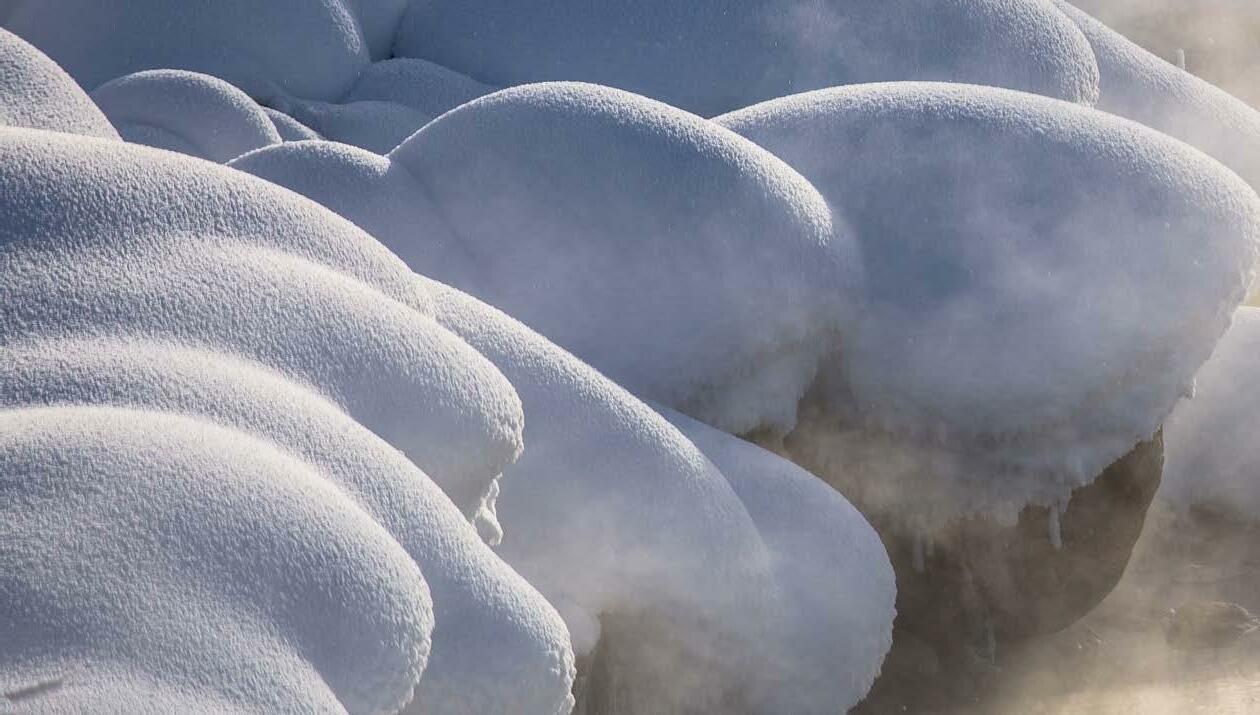
TREY MULLEN
1880 Loggers Lane, Unit B • 970.879.8116 • mountainmattress.com BIG CITY PRICES | SMALL TOWN SERVICE Keep Steamboat unique, shop local! Ask about our best price guarantee.




Since opening in 2003, Mountain Mattress & Furniture has been locally owned and operated. Our two-story showroom offers an extensive selection of mattresses, bedding and furniture for every budget. We carry the largest selection of mattresses in Northwest Colorado. There is no reason to leave town with our price match guaranty you will receive the best price available anywhere. Whether you are furnishing a whole house or just want a great night’s sleep, we can help. Our commitment to outstanding customer service has allowed us to serve our wonderful community for over 19 years.
an overall darker surface (or lower albedo value), which translates to faster rates of snowmelt. As air temperatures rise in the springtime and snowpack begins to melt and condense, these dust layers merge, combining to create even darker surface layers, again increasing the rate of snowmelt. Experts say 70-80% of surface water in the western U.S. comes from snowmelt. Derry says if we are to think of our mountain snowpack as a reservoir of water meant to sustain the landscape throughout the summer, and suddenly that reservoir is opened too wide and too early in the season, then those water shortages are certain to have environmental and economic impacts in the months to come.
“You can look at satellite data, and see the snow surface, and get an albedo number from satellite data,” Derry says. “But, if you want the albedo forecast, you have to dig a snow pit and look at what’s in the snow to know what’s coming around the bend. If you’re just looking at what’s on the surface, you’re not forecasting, you’re reacting. By knowing what’s in the snow, you can forecast what albedo is going to do. By forecasting albedo, you’re going to have a very good handle on timing of snowmelt and snowmelt rates.”
The CODOS issues regular research findings based on their sampling data at CODOS.org on how dust-on-snow events may impact snowmelt timing and rates in your region of the state. Jeff Derry hopes that the combined metrics from his 11 unique sampling sites will help local water management agencies be more proactive in their forecasting and ultimately better allocate this essential resource we all depend on. Who knew that wind storms in Four Corners could affect the Steamboat Springs community so deeply? SM “A river is more than an amenity, it is a treasure.”
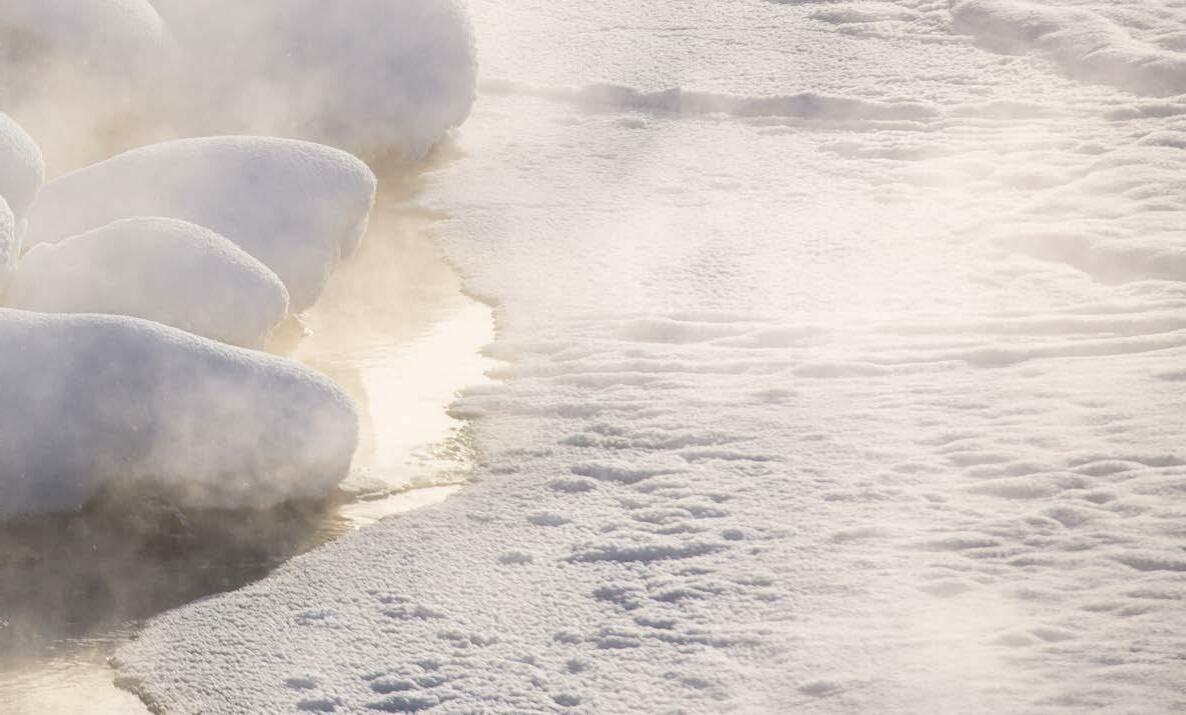
Supreme Court Associate Justice Oliver Wendell Holmes Jr.






